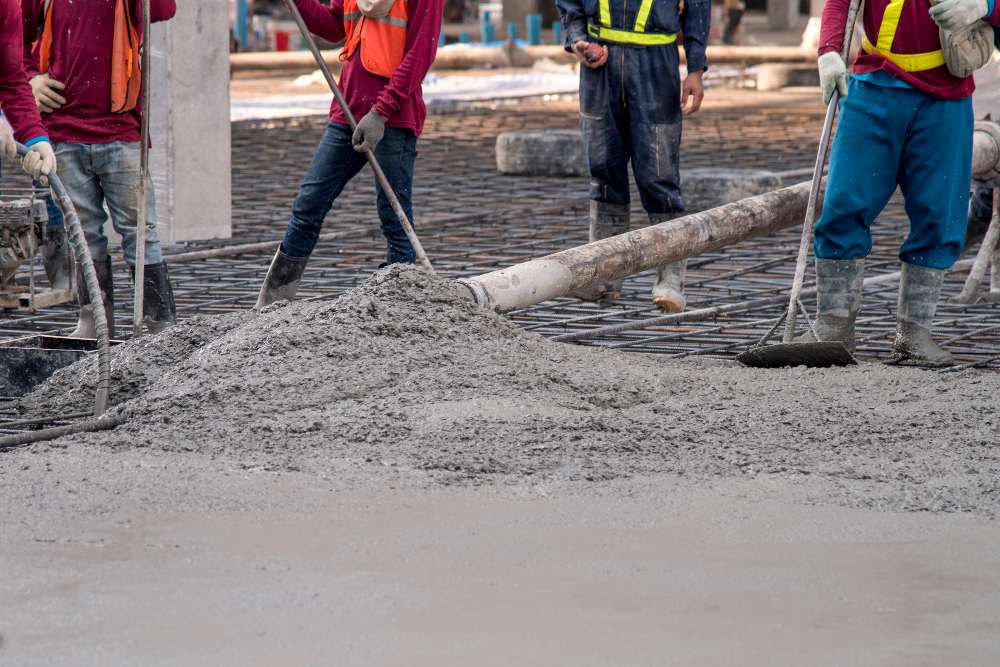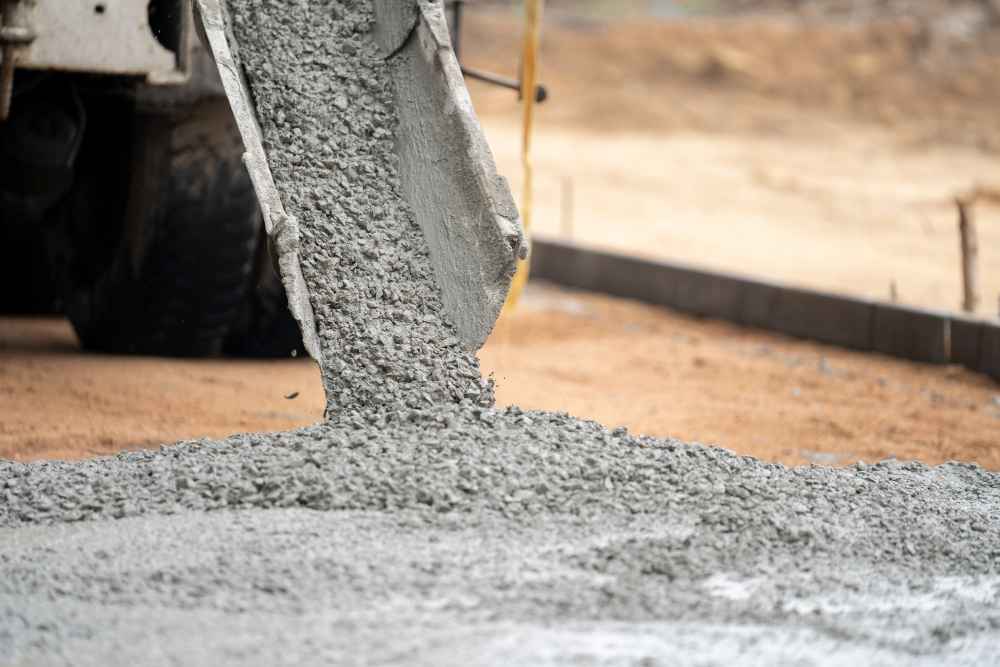You might think that ready-mix concrete and liquid concrete are similar because they both share some common ingredients, but their applications, textures and advantages vary significantly.
This blog will give you a simple and helpful guide to understanding the difference between liquid concrete and ready-mix concrete. Let’s discover how these construction solutions can enhance your building projects.
Ready-mix concrete is created by mixing together aggregates (like gravel and crushed stone), water and cement. Sometimes, extra things are added to make it stronger or to make it dry faster. The bigger aggregates, up to 20mm in size, give it extra strength, making it suitable for structural construction projects.
Ready mix concrete is used primarily for external applications, such as structural foundations, pathways, shed bases, driveways, fences, paving walls, footpaths and anywhere else where a strong and long-lasting result is of the utmost importance.

Ready mix concrete is made in a controlled place, using the best materials like gravel, water and cement. It is accurate and can be used for many different projects.
With ready-mix concrete, there is no hassle. Once it is delivered, you can start building right away. Whether it is a bridge, walls, floors, stepping stones or even a dog kennel, ready-mix concrete makes things faster because its already mixed and ready to use.
You can change ready-mix concrete to fit your project perfectly. If you need more or less of the mix, tell the company, and they will adjust it.
Instead of purchasing individual concrete materials, you can get the final product at a reduced price. Concrete suppliers buy in bulk, so they offer reasonable prices.
When you let professionals handle the mixing, supplying and delivering, you save time. All you need to do is your concrete, pick a delivery date and start the project when it arrives.

Liquid concrete has some of the same ingredients as ready-mix concrete, like water and cement. But what sets it apart is how it uses smaller and fewer aggregates, around 5-6mm in size. It gives it a smoother and more liquid-like texture, unlike the solid feel of concrete.
Liquid concrete is for inside use and makes your floors nice and smooth. It is simple to use, so you won’t have any bumpy or uneven areas. It is easy to work with, so you won’t have any uneven spots. You can also put it on an old concrete floor for protection.
Installing liquid concrete is much faster, up to 10 times quicker than other types of concretes. It also requires less work.
It provides better insulation because it does not take up as much space, allowing for thicker floor insulation. Thicker insulation keeps your property warmer and saves on heating costs.
Liquid concrete dries fast due to its reduced depth, making it great for projects that need quick results.
Liquid concrete has a shorter initial setting time and it becomes strong enough to walk on within 24 hours.
When used with underfloor heating, liquid concrete excels. It can flow around pipes and fill gaps, distributing heat evenly for better efficiency.
The choice between ready-mix concrete and liquid concrete depends on your project’s specific requirements. Knowing how they are different and the advantages will help you make smart choices for successful construction projects.
A boom pump uses a robotic arm (boom) to deliver concrete with precision at height or distance, making it ideal for large-scale and high-rise projects. A line pump, on the other hand, is better suited for smaller, ground-level jobs and uses flexible hoses to deliver concrete. We offer both types depending on your project requirements.
With a boom pump, concrete can be pumped up to 70 metres vertically and over 200 metres horizontally. Line pumps can reach around 150 metres horizontally, depending on the setup and hose diameter. Our experts will assess your site and recommend the best solution to reach even the most challenging locations.
Yes, it’s important to ensure the site is accessible, level, and free from obstructions. There should be enough space for the pump vehicle to park and operate safely. If you’re unsure about access or clearance, our team can provide advice or arrange a pre-site visit.
The duration of a concrete pumping job depends on the volume and complexity of the pour. In general, a typical residential pour can be completed in under two hours. Our efficient service aims to minimise downtime and keep your construction project on schedule.
Yes, concrete pumps can operate in light rain and mild weather conditions, but heavy rain, high winds, or frozen ground may delay or halt operations for safety reasons. We always monitor the forecast and keep you informed of any possible schedule changes.
Yes, all our pump hires include a trained and experienced operator who will handle the equipment and ensure concrete is placed efficiently and safely. They’ll also help guide you through the process on-site, ensuring a smooth pour every time.
Ready Mix Concrete London (Trading as Pro-Mix Concrete Ltd)
Copyright © 2025 | Ready Mix Concrete London (Trading as Pro-Mix Concrete Ltd) | All Rights Reserved.